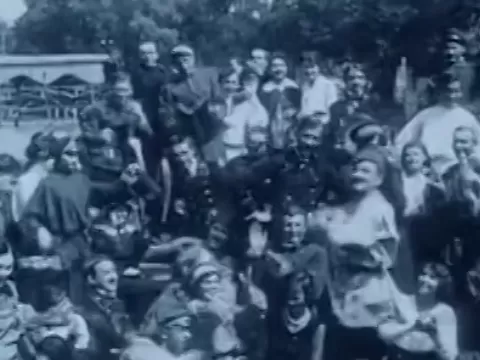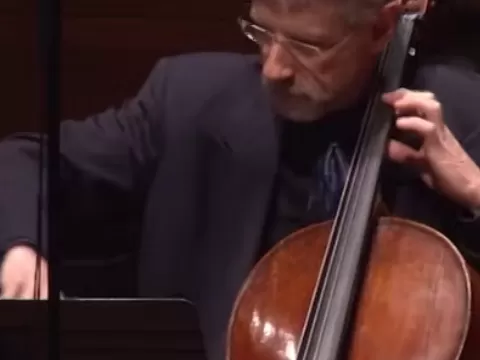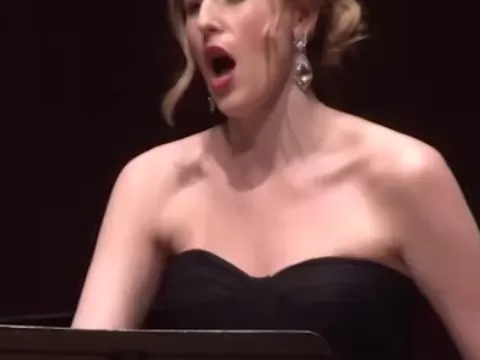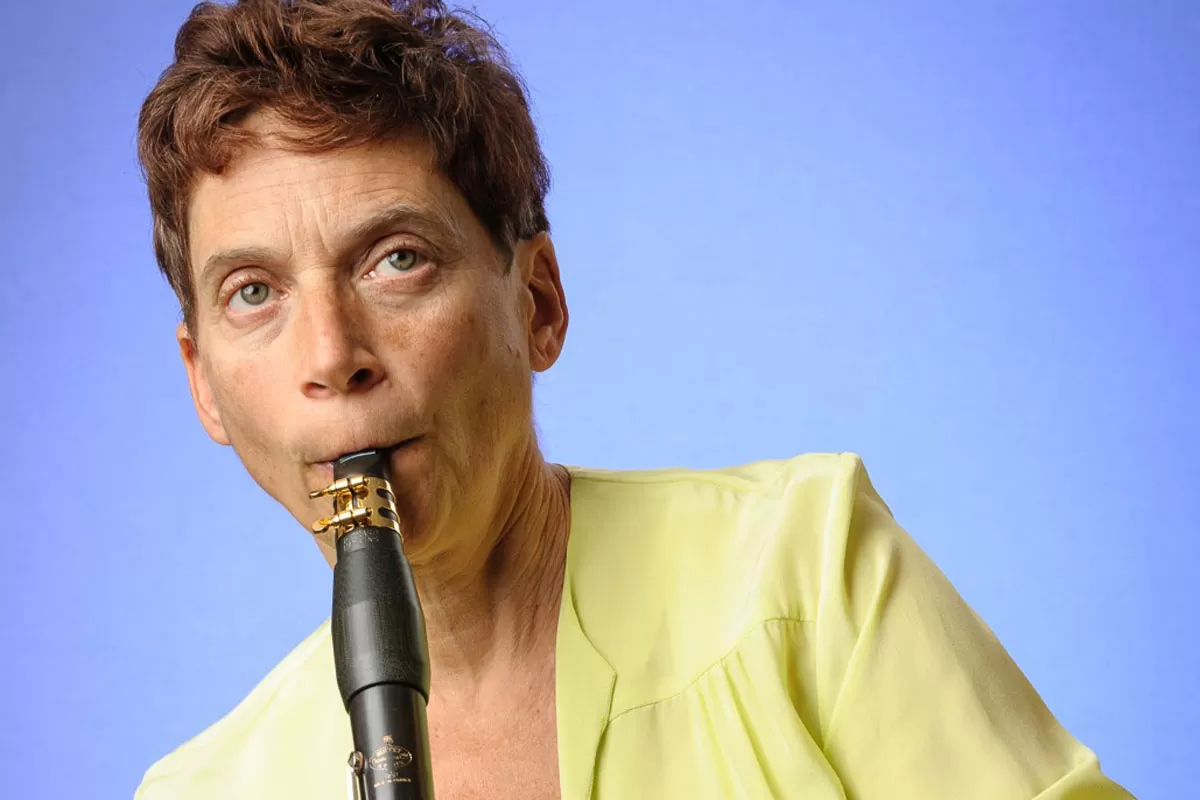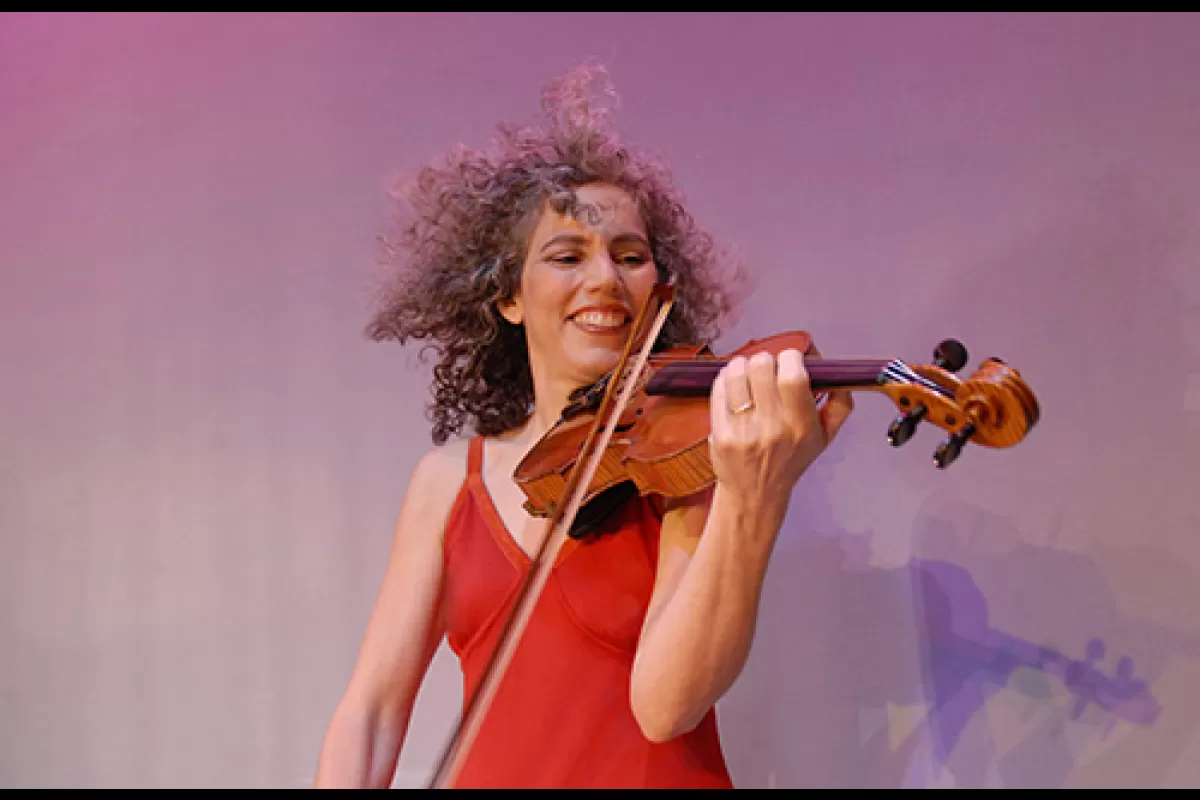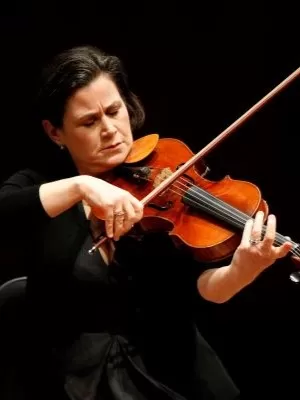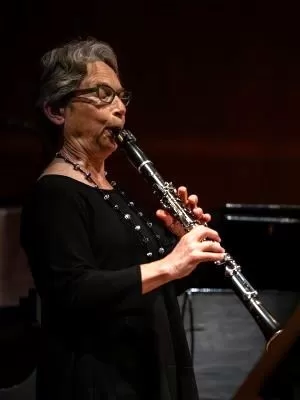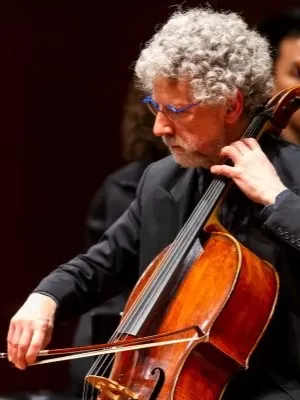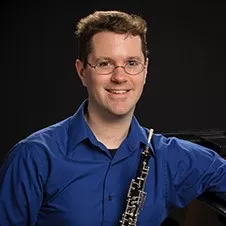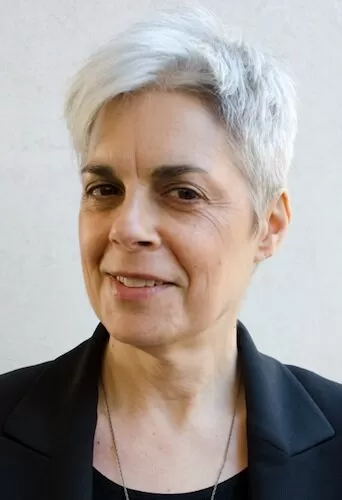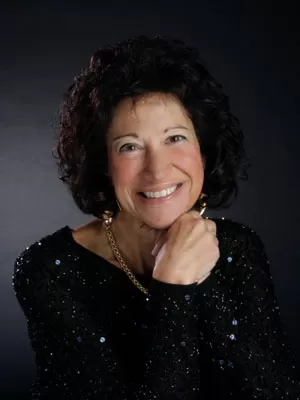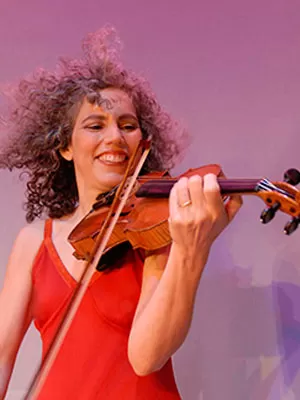May 12, 2014 - 12:00 pm
Clarinetist Laura DeLuca joined the Klezmatics’ Alicia Svigals in a performance of Svigal’s new score to enliven this special screening of the classic 1918 silent film The Yellow Ticket, starring Pola Negri. This concert also featured the World Premiere of Lori Laitman’s song cycle, In Sleep The World Is Yours, setting the haunting verses of Selma Meerbaum Eisinger, a gifted young poet who perished at age 18 in a Nazi labor camp.
Meet the Composers
6:15 PM: Lori Laitman & Alicia Svigals
Interviewed by Enrique Cerna, KCTS9, Executive Producer
Program
Serenade No. 2 for 2 Violins and Viola (1932)
Bohuslav Martinu
Elisa Barston, violin; Mikhail Shmidt, violin; Susan Gulkis Assadi, viola
Todesfuga (2011)
Lori Laitman
*World Premiere of English version
Erich Parce, baritone; Walter Gray, cello
In Sleep The World Is Yours (2014)
Lori Laitman
*World Premiere commmissioned by Music of Remembrance
Megan Chenovick, soprano; Ben Hausmann, oboe; Mina Miller, piano
The Yellow Ticket
Alicia Svigals
*Featuring the World Premiere of an expanded score for Laura DeLuca, clarinet
Laura DeLuca, clarinet; Alicia Svigals, violin; Marilyn Lerner, piano
Laura DeLuca, clarinet, screenshot from The Yellow Ticket, Marilyn Lerner, piano
ABOUT THE MUSIC
Serenade No. 2 for 2 Violins and Viola (1932)
Bohuslav Martinu
(b. Policka, Bohemia, 1890 - d. Listeal, Switzerland, 1959)
The artist is always searching for the meaning of life, his own and that of mankind. A system of uncertainty has entered our daily life. The pressures of mechanization and uniformity to which it is subject call for protest, and the artist has only one means of expressing this: through music. - Bohuslav Martinu
The life and career of Bohuslav Martinu offer a prism on the artistic turbulence and world-transforming events of the first half of the 20th Century. Born in the small Bohemian town of Policka, near the border with Moravia, he began studying violin at age six. He quickly became known as an unusual young talent, and the townspeople raised enough money to send him to begin studies at the Prague Conservatory at age 15. His free spirit, and his will to explore and learn on his own, were ill-matched with the disciplined life expected of a conservatory student, and he returned home after five years. When Czechoslovakia became an independent republic after the First World War, Martinu wrote a celebratory cantata that premiered in 1919 to broad acclaim. The following year he joined the Czech Philharmonic Orchestra as a violinist, and while in Prague began composition studies with the eminent Czech violinist and composer Josef Suk.
Frustrated by the conservative styles in Prague, he left for Paris in 1923 and sought out Albert Roussel, who helped him concentrate on developing an individual voice. Martinu was influenced by many of the trends of the time, including jazz, neoclassicism and surrealism. The Serenade was composed in Paris in 1932, a prolific year for the composer. Its three movements juxtapose homages, respectively, to Mozart’s classicism, Dvorak’s lyrical brightness and Stravinsky’s neo-Classicism.
With the German invasion of France in 1940, Martinu was forced to flee because of his involvement with the Czech resistance. With his wife he escaped through the south of France, then Spain and Portugal, and reached the United States in 1941. Adjustment to life in America was difficult, but he composed his six symphonies between 1942 and 1946. Martinu remained deeply engaged with events in Europe, and in 1943 he composed the orchestral work Memorial to Lidice in remembrance of the Czech town destroyed by the Nazis in reprisal for the assassination of Reinhard Heydrich.
Todesfuga (2011)
Lori Laitman
(b. Long Beach, New York, 1955)
Text by Paul Celan (b. Czernowitz, Romania, 1920 - d. Paris, France, 1970)
World Premiere of the English Version
Paul Celan, one of the major post-World War II German language poets, was born Paul Antschel into a Jewish family in Czernowitz, Romania (now Chernivitsi, Ukraine), which he later hauntingly described as a place “where human beings and books used to live.” His cousin Selma Meerbaum-Eisinger was also a poet. During the Second World War Celan survived three years in a ghetto and then an internment camp, but never succeeded in shedding the Holocaust’s painful memories. His poem Todesfuge (Death Fugue), first published in 1947, was one of the earliest literary depictions of concentration camp existence. A tormented soul, Celan ended his life in Paris in 1970 at the age of 49.
Celan’s cousin Selma Meerbaum-Eisinger, four years younger, grew up in the same town. In October 1941 she was forced into confined and miserable ghetto conditions, and deported the following year, with her parents and Celan’s, to a Nazi slave labor camp where she succumbed to typhus. In the days before her deportation, Selma collected her poems in an album she titled Harvest of Blossoms, which she dedicated to her young love. The miraculous survival of this poetry album is the result of Selma’s childhood friends and the heroic efforts of her cousins, Helene and Irene Silverblatt, living in the United States, who introduced the 2008 publication in English of Selma’s poetry. Selma’s verses offer a precious glimpse of her world, a world of “love and heartbreak, desire and loss, injustice and marred hope.” We will never know the unrealized potential of this eloquent poet who died at age 18.
Paul Celan became a famous literary figure, while Selma Meerbaum-Eisinger is only now emerging from undeserved obscurity. Still, their lives were interwined. Celan granted permission to publish his Todesfuge in a 1968 German anthology only if one of one of Selma’s poems appeared next to his of Todesfuge. It was a unique privilege to present musical settings of their poems together that evening. Composer Lori Laitman has a rare gift for setting words to music that captures the depth of human experience with emotional and artistic honesty. Selma’s surviving relatives Helene and Irene Silverblatt made this possible by their permission and encouragement to share Selma’s words through music, and we were honored to have them with us that evening.
Lori Laitman offers the following remarks:
Todesfuge (Death Fugue), initially drafted in Romanian in 1944, was published in German in 1948. The poem is one of Celan’s most famous works and was one of the first to address the horrors of the Holocaust. The strikingly grim images create an atmosphere of extreme and haunting power:
“SCHWARZE Milch der Frühe”// “BLACK milk of daybreak”
“der Tod ist ein Meister aus Deutschland”// “this Death is a master from Deutschland”
“er ruft streicht dunkler die Geigen dann steigt ihr als Rauch in die Luft/dann habt ihr ein Grab in den Wolken da liegt man nicht eng”// “he shouts scrape your strings darker you’ll rise up as smoke to the sky/you’ll then have a grave in the clouds where you won’t lie too cramped”
The poem’s unusual structure borrows from the concept of a musical fugue, with phrases that repeat and recombine. I mirror this musically, with miniature leitmotivs that repeat and recombine—a challenge in that the repetition of musical content often requires different considerations than the repetition of words.
I composed two settings: one in the original German and one using the English translation by John Felstiner. Slight musical changes were necessary to accommodate differences of usage and inflection. The songs can be sung separately or together.
The rhythmically driving cello accompaniment and the repetitions of the “black milk” vocal theme emphasize a feeling of dread and attempt to capture the inescapable relentlessness of the horror. Additional “word painting” runs throughout: two examples are the vocal melisma on “swing” and the intense repeated notes at the top of the cello range, depicting the “grave in the clouds.” Harmonies reflect on the emotions behind the words. As the song comes to a close, the voice whispers “der Tod ist ein Meister aus Deutschland” while the cello repeats this theme, ending with an echo of the sorrowful “Shulamith” motif.
My settings of Todesfuge were commissioned by Austrian baritone Wolfgang Holzmaier in 2010. He performed the world premiere of the German version on Feb. 21, 2012 at The Austrian Cultural Forum in New York City.
In Sleep The World Is Yours (2013)
Lori Laitman
Poetry by Selma Meerbaum-Eisinger
(b. Czernowitz, Romania, 1924 - d. Michailowka labor camp, Ukraine, 1942)
World Premiere, commissioned by Music of Remembrance
Made possibly by Music of Remembrance's Commissioning Circle
Lori Laitman offers the following remarks:
Selma was born to a German-speaking Romanian Jewish family in 1924. A talented writer, she began creating poetry at age 15. Her works consist of fifty-two poems and five translations. In 1942 at age 18, Selma died of typhus in a labor camp in the Ukraine. Thanks to the dedication and love of her friends, and later her relatives, her poetry survived, and resulted in the 2008 publication Harvest of Blossoms. What I found inspiring about Selma’s poetry was that she was able to speak the truth in simple but clear poetic language. Behind the apparent simplicity of her words, however, was a depth of feeling and thought that, for me as a composer, was very exciting — because when setting a poem to music, I look for words that an audience can grasp aurally —but also for an underlying complexity that provides me with opportunities for creating dramatic music to illuminate the text. In this respect, Selma’s poems were perfect.
I chose three poems from Selma’s book: Lullaby, Yes and Tragedy, allowing me to create a cycle with a dramatic musical arc. The combination of soprano, oboe and piano perfectly suited the mood of the poems.
Lullaby spotlights Selma’s imagination, her capacity for love and hope, as well as her sense of foreboding and the realization that dreams might provide the only comfort in the increasingly dark days.
Yes is a good example of simple surface language combined with a complicated subtext. The song progresses from a turbulent opening to a peaceful close, as Selma understands how memory will always keep loved ones close.
Tragedy ends the work, and Selma’s heartbreaking words reveal her reality: “to give all of yourself and realize/you’ll fade like smoke and leave no trace.” Yet, Selma kept writing. She knew how important the mind and imagination were when facing the unimaginable.
And how lucky for us that she did leave a trace. While one wonders how she would have grown, her beautiful poetry gives us a glimpse of a supremely intelligent, spirited and gifted young girl.
The Yellow Ticket
Alicia Svigals
(b. New York City, New York, 1963)
World Premiere of expanded musical score
Commissioned by Music of Remembrance
The Yellow Ticket music composition project by Alicia Svigals was first commissioned by the Foundation for Jewish Culture’s New Jewish Culture Network, and was made possible by the Arthur Tracy “The Street Singer” Endowment Fund. The expanded musical version for clarinet, violin and piano (2014), was commissioned by Music of Remembrance and had its world premiere at Music of Remembrance’s Holocaust Remembrance Concert on May 12, 2014, Benaroya Hall, Seattle, WA.
Historical Background
Directed by Victor Janson and Eugen Illès, The Yellow Ticket (1918) was one of Pola Negri’s first films for the German film studio UFA, and Paramount later released it in the U.S. in 1922. Negri, born in Poland in 1897, was the first exotic European actress imported to Hollywood during the silent film era and its highest paid actress, renowned for her flamboyant style and independent spirit. Although Negri is best known for her subsequent “vamp” and femme fatale roles both for German and American film, The Yellow Ticket offered an opportunity to play an atypical role of a sensitive, ambitious scholar.
The Yellow Ticket is set prior to the October Revolution, when sex work was legal in Tsarist Russia. Despite the government’s liberal policies on prostitution, anti-Semitic laws required Jewish women from the Pale of Settlement to possess prostitution papers in order to reside in cities outside the Pale of Settlement. The film, which explores social issues such as human trafficking, ethnic and religious discrimination and poverty, is based on Abraham Schomer’s 1911 Yiddish melodrama Afn Yam un “Ellis Island” (At Sea and Ellis Island) that was subsequently produced on Broadway in 1914 in an unauthorized English-language version written by Michael Morton. Several cinematic adaptations of the story preceded and followed the UFA production. An additional literary source is Aleksandr Amfiteatrow’s 1908 novel The Yellow Pass.
Filmed partly on location in German-occupied Warsaw during the last year of World War I, the melodrama has several historical merits. Exteriors include rare documentary footage of Nalewki, Warsaw’s bustling Jewish district, before the neighborhood and the majority of its residents were destroyed by Nazi Germany. In addition, the film is a curious example of propaganda used to portray the Russian regime as inhumane and heartless.
In Memoirs of a Star (1970), Negri argues that The Yellow Ticket was remarkably progressive during a cinematic period of ethnic stereotyping: “Its sympathetic portrait of Jews might displease some of the population, but a vast majority would be very moved by it. It might even help to spread a little tolerance and understanding, and this would be no small accomplishment during those long enervating years of war.” - Andrew Ingall, Foundation for Jewish Culture
Alica Svigals offers the following remarks:
When I was commissioned to compose a new score for legendary silent movie star Pola Negri's 1918 film The Yellow Ticket, I found myself confronted with several intriguing challenges. This wonderful and strange work is a story about Jews, but made by and mostly for non-Jews. I wished to be the missing Jewish artistic collaborator who might bridge that gap by providing authentic sounds drawn straight from the Jewish soul. More than that, I wanted to bridge that gap between our time and theirs, which might deprive us of an emotional response to the story—a response which its original audience would surely have had.
The social mores depicted are a little mysterious now, and the pressures that drive the characters are not as self-evident as they would have been when the film was made. The narrative conventions of film, which are a second language to us, had not yet been formulated, and our cinematic technology renders the action a little faster than it should actually be. So I felt my task was to help the viewer overcome these obstacles: to use the soundtrack to clarify the story’s structure and through the music to arouse in the viewer the profound emotions depicted in the film.
I went about composing by watching each scene over and over until I was familiar with each gesture of the actors and every movement of the camera; in some scenes I could almost detect a steady tempo, and I used this as a basis for the melodies. Out and about in the streets of New York, I could still see the film in the corner of my mind’s eye and sounds to go with it would pop into my head.
The score is influenced by klezmer and non-Jewish East European folk forms, Béla Bartók and Ernest Bloch, European café music, the cantorial tradition, and my own particular fiddling style.
About Music notes by Mina Miller. Copyright 2014 Music of Remembrance.
